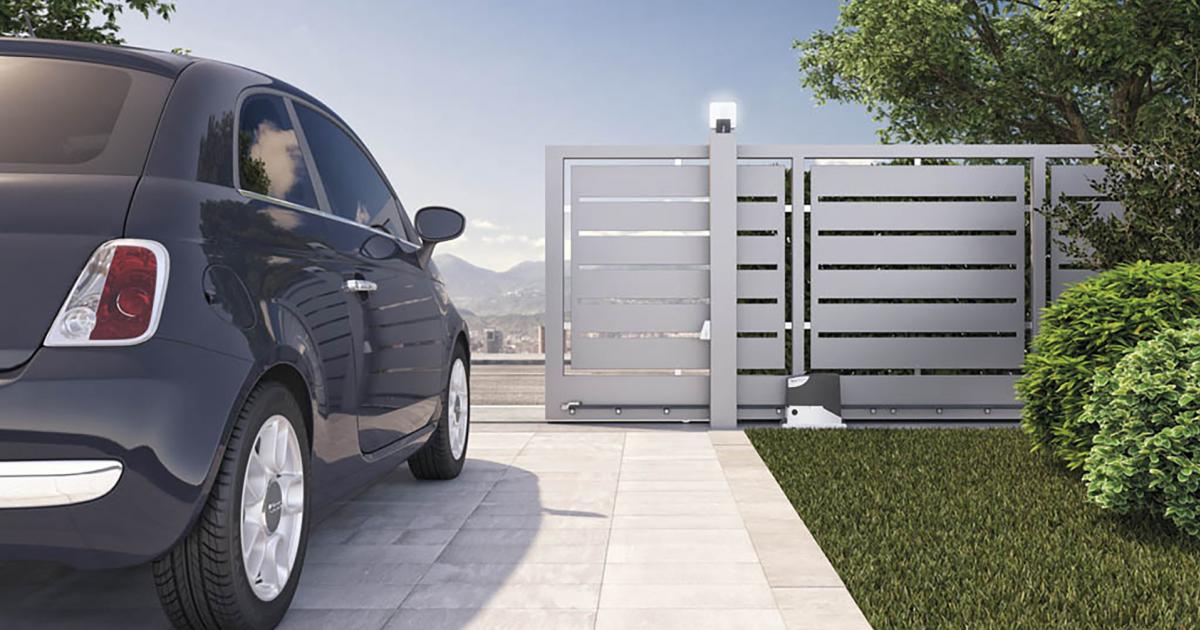Security challenges are evolving, with property crime rates remaining a significant concern for homeowners and businesses alike. According to the FBI, property crimes accounted for over 7 million offenses in the United States alone in 2021, making security systems more critical than ever. The integration of remote gate control, CCTV, and motion sensors is transforming how we approach property security, providing comprehensive solutions that enhance safety and convenience.
This article delves into how these technologies work together, the benefits they provide, and the future of security solutions in our increasingly connected world.
The Components of Integrated Security Systems
1. Remote Gate Control Systems

Remote gate control systems allow users to manage access to their properties from anywhere using smartphones or other devices. These systems can include various gate types, such as sliding gates, swinging gates, and barriers, which can be operated remotely. Users can open or close gates using a mobile app, providing convenience and security.
Benefits of Remote Gate Control:
- Convenience: Easily manage access without needing to be on-site.
- Security: Restrict unauthorized access and monitor entry points.
- Integration: Connects seamlessly with other security devices, enhancing overall safety.
2. CCTV Surveillance Systems

Closed-circuit television (CCTV) systems are a critical component of modern security setups. These systems allow for real-time monitoring of properties, providing visual evidence of any suspicious activity. Many advanced CCTV systems now come with features like:
- High-definition video quality
- Night vision capabilities
- Remote viewing through mobile applications
Advantages of CCTV:
- Deterrence: Visible cameras can deter potential criminals.
- Evidence Collection: Recorded footage can be invaluable for investigations.
- Monitoring: Users can keep an eye on their property in real-time from anywhere.
3. Motion Sensors

Motion sensors detect movement within a specific area and are often used in conjunction with other security devices. They can trigger alarms, send alerts to users, or activate CCTV cameras to capture footage of the event. Motion sensors can be used for both outdoor and indoor applications.
Benefits of Motion Sensors:
- Instant Alerts: Users are notified immediately of any detected movement.
- Energy Efficiency: Can be set to activate only when needed, reducing energy consumption.
- Customizable: Can be adjusted for sensitivity to reduce false alarms from pets or environmental factors.
Integration of Technologies for Enhanced Security

The combination of remote gate control, CCTV, and motion sensors creates a cohesive security system that addresses various security needs. Here’s how these technologies work together:
1. Real-Time Monitoring and Control
By integrating CCTV cameras with remote gate control systems, property owners can monitor who is approaching their gates in real time. For instance, a user may receive a notification on their smartphone when someone approaches the gate, allowing them to decide whether to grant access immediately.
2. Automated Responses
When motion sensors detect movement, they can trigger CCTV cameras to start recording and alert the gate control system. This automated response not only enhances security but also provides valuable footage for investigations if an incident occurs.
3. Centralized Management
With advancements in technology, integrated systems can be managed from a single application. Users can control gates, view live camera feeds, and receive motion alerts all in one place, making security management more efficient and user-friendly.
Benefits of Integrated Security Solutions
1. Enhanced Security
The primary benefit of integrating remote gate control with surveillance technologies is the increased level of security. This multi-layered approach ensures that unauthorized access is not only prevented but also monitored, providing a comprehensive security solution.
2. Cost-Effectiveness
While the initial investment in integrated security systems may be higher than traditional methods, the long-term savings can be significant. Reduced property damage, theft, and lower insurance premiums can offset initial costs.
3. Convenience and Accessibility
With remote access control, property owners can manage their security systems from anywhere, providing peace of mind while traveling or at work. This convenience is especially beneficial for busy professionals and families.
4. Scalability
Integrated security systems can be easily scaled to accommodate growing security needs. For instance, as a business expands, additional cameras or sensors can be added without significant overhauls to the existing system.
Challenges and Considerations
While the benefits of integrated security solutions are substantial, there are also challenges to consider:
1. Technology Dependence
The reliance on technology can pose risks, such as system malfunctions or cyber threats. Ensuring that systems are regularly updated and maintained is essential for long-term reliability.
2. Initial Costs
The upfront costs for high-quality CCTV, motion sensors, and remote gate control systems can be significant. However, many providers offer financing options to alleviate this burden.
3. Privacy Concerns
The use of surveillance cameras raises privacy concerns, especially in residential areas. It’s crucial to ensure that cameras are positioned in a manner that respects the privacy of neighbors and complies with local regulations.
The Future of Remote Gate Control and Surveillance Integration
As technology continues to evolve, the future of remote gate control and surveillance integration looks promising. Here are some trends to watch:
1. Artificial Intelligence (AI)
AI is becoming increasingly important in security systems, enabling advanced features like facial recognition and predictive analytics. These capabilities can enhance threat detection and response times.
2. Smart Home Integration
With the rise of smart homes, integrating gate control and surveillance systems with other smart devices (like doorbells and lighting) will become more common. This integration will provide a more cohesive and automated home security experience.
3. Cloud-Based Solutions
Cloud technology allows for easier data storage and access. Users can access their footage and control systems from anywhere with an internet connection, making security management more accessible.
4. Sustainability
As environmental concerns grow, there is a push towards more sustainable security solutions. Solar-powered cameras and energy-efficient systems are becoming more popular, reducing the carbon footprint of security operations.
Conclusion
The integration of remote gate control systems with CCTV and motion sensors provides a comprehensive security solution for homes and businesses. This combination offers enhanced security, convenience, and cost-effectiveness while also addressing modern challenges in property protection. As technology continues to evolve, so too will the capabilities of integrated security systems, making them an essential component of any effective security strategy.
By understanding and leveraging these technologies, property owners can significantly improve their security posture, ensuring peace of mind in an uncertain world.
If you’re considering upgrading your security system, explore your options for integrating remote gate control, CCTV, and motion sensors. Consult with security professionals to find the right combination of technologies that best suits your needs.




